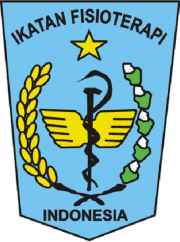Author Guidelines
A Title Should be Concise to Express the Entire Content
First Author, Second Author, Third Author
Affiliation/Institution
Institution address
Email: [email protected]
Abstract
A well-prepared abstract enables the reader to identify the basic content of a document quickly and accurately, to determine its relevance to their interests, and thus to decide whether to read the document in its entirety.The Abstract should be informative and completely self-explanatory, provide a clear statement of the problem, the proposed approach or solution, and point out major findings and conclusions. The Abstract should be 150 to 200 words in length. The abstract should be written in the past tense. Standard nomenclature should be used,abbreviations and citation should be avoided in the abstract.
Keywords: 3 – 5 words
Abstrak
Abstrak yang dipersiapkan dengan baik, memungkinkan pembaca untuk mengidentifikasi konten dasar dari dokumen dengan cepat dan akurat, untuk menentukan relevansinya dengan kepentingan mereka, dan dengan demikian mereka dapat memutuskan apakah akan membaca dokumen secara keseluruhan atau tidak. Abstrak harus informatif dan benar-benar jelas, memberikan pernyataan yang jelas apa permasalahan yang ada, pendekatan atau solusi yang diusulkan, dan menunjukkan temuan utama dan simpulan. Panjang abstrak harus dalam 150 sampai 200 kata. Abstrak harus ditulis dalam bentuk lampau. Standar nomenklatur harus digunakan, singkatan dan pengutipan dalam abstrak harus dihindari.
Kata kunci:3 – 5 kata
Introduction
This chapter outlines the background adequately. Research problem should be elaborated with short review of literature and previous related publications. Authors are required to include the citation of the previous published article from Journal Fisio Mu at least2 articles. Describe the purposes of the research to complete this part.
Research Method
This chapter should contain sufficient technical information so that the method can be repeated by others well. Describe conclusively that the method used is a new method and if necessary use a table or a flowchart likeFigure 1 to support the description.

Figure 1. Example of Figure
Results and Discussions
This chapter contains the results of research. The results can be presented in the form of text, tables, images, maps and accompanied interpretation associated with the results that have been reported. Images and Maps be made as simple as possible so it can be understood easily. Drawings, maps and titles given source image with the numbering sequence (see Figure 1). The table given above title is also accompanied by sequentially numbering. Both Pictures, Maps and tables should be cited in the body text. Maps must be made either in color or grayscale format, but the differences of each value / object is clearly visible. Design layout simplified map that can be included in the text without reducing the content of the map (Figure 2).

Figure 2. Example of Image
Conclusion
The conclusion must be present throughout the study findings. Writing the conclusion must be simple and concise sentences so easily to be understood by the reader. Accompanied suggestion refers to the research results obtained.
Acknowledgements
Acknowledgements can be delivered to the parties who have helped research and completion of the writing of the manuscript. These parties can act as mentors, funders, providers of data, and so forth.
References
Bibliography follows the system name and year (APA style) sorted alphabetically last name authors, the following are some examples of writing bibliography used in Fisio Mu.
Book
Abdul-Rahman, A., dan Morakot, P. (2008) Spatial Data Modelling for 3D GIS . Fifth Edition. Berlin: Springer.
Demers, M. N. (1997) Fundamentals of Geographic Information System . New York: JohnWiley & Sons, Inc.
Book with Editor
Danaher, P. (ed.) (1998) Beyond the ferris wheel, Rockhampton: CQU Press.
Book Chapter with Editor
Byrne, J. (1995) ‘Disabilities in tertiary education’, in Rowan, L. and McNamee, J. (ed.) Voices of a Margin, Rockhampton: CQU Press.
Anonymous Book
The University Encyclopedia (1985) London: Roydon.
Mass Media with Known Author
Priyana, Y. (2010) ‘Dampak Solo Car Free Day Terhadap Lingkungan, Solopos, 4 April, p. 1.
Mass Media without Author
‘Dampak Solo Car Free Day Terhadap Lingkungan, Solopos, (4 April 2010), p. 3.
Journal Article
Santosa, W. S. dan Adji, N. A. (2007) The Investigation of Ground Water Potential by Vertical Electrical Sounding (VES) Approach in Arguni Bay Region, Kaimana Regency, West Papua. Forum Geografi. Vol. 21, No.1, pp. 103-115.
Web (avoid this source when possible)
Neumann, A., dan Andréas M, W. (2000) Vector-based Web Cartography: Enabler SVG,[online],dari: www.carto.net [5 August 2008].









